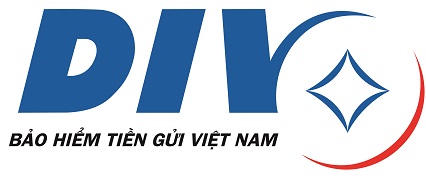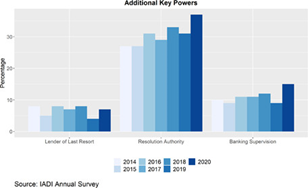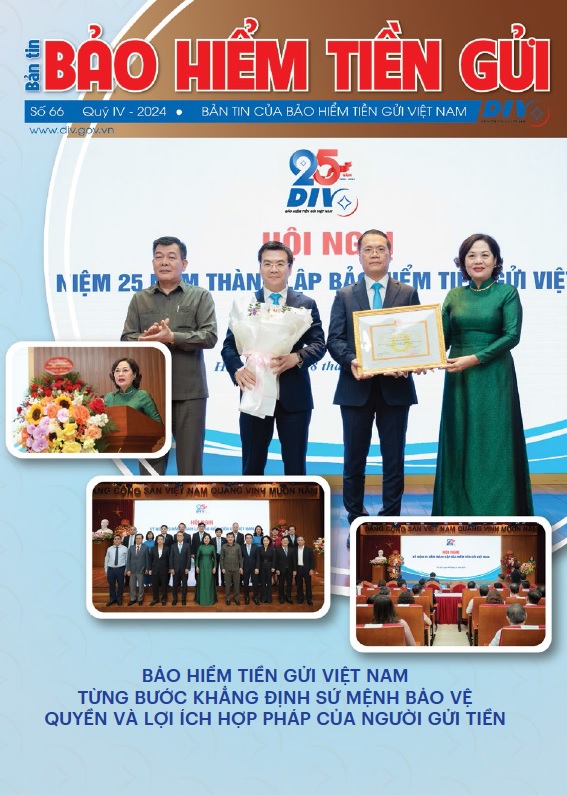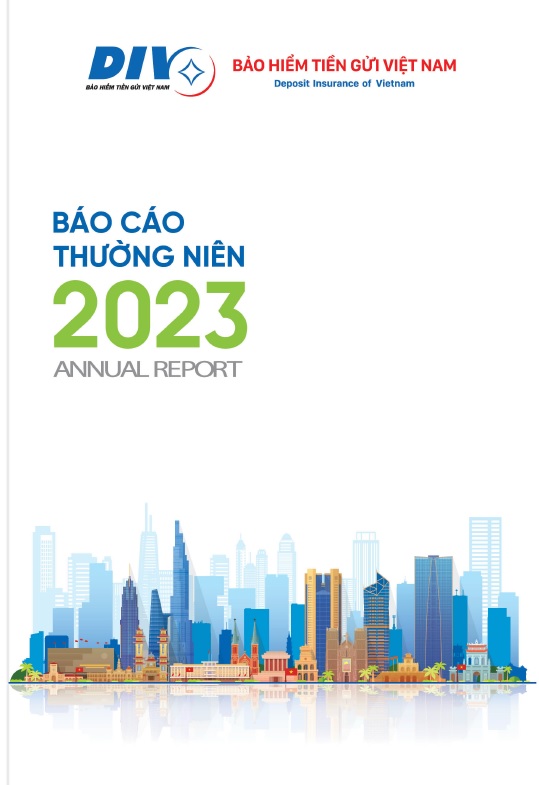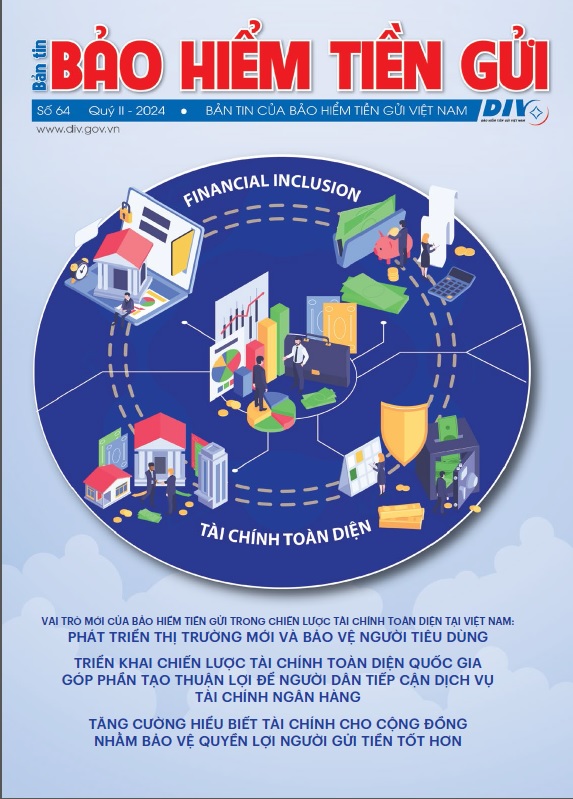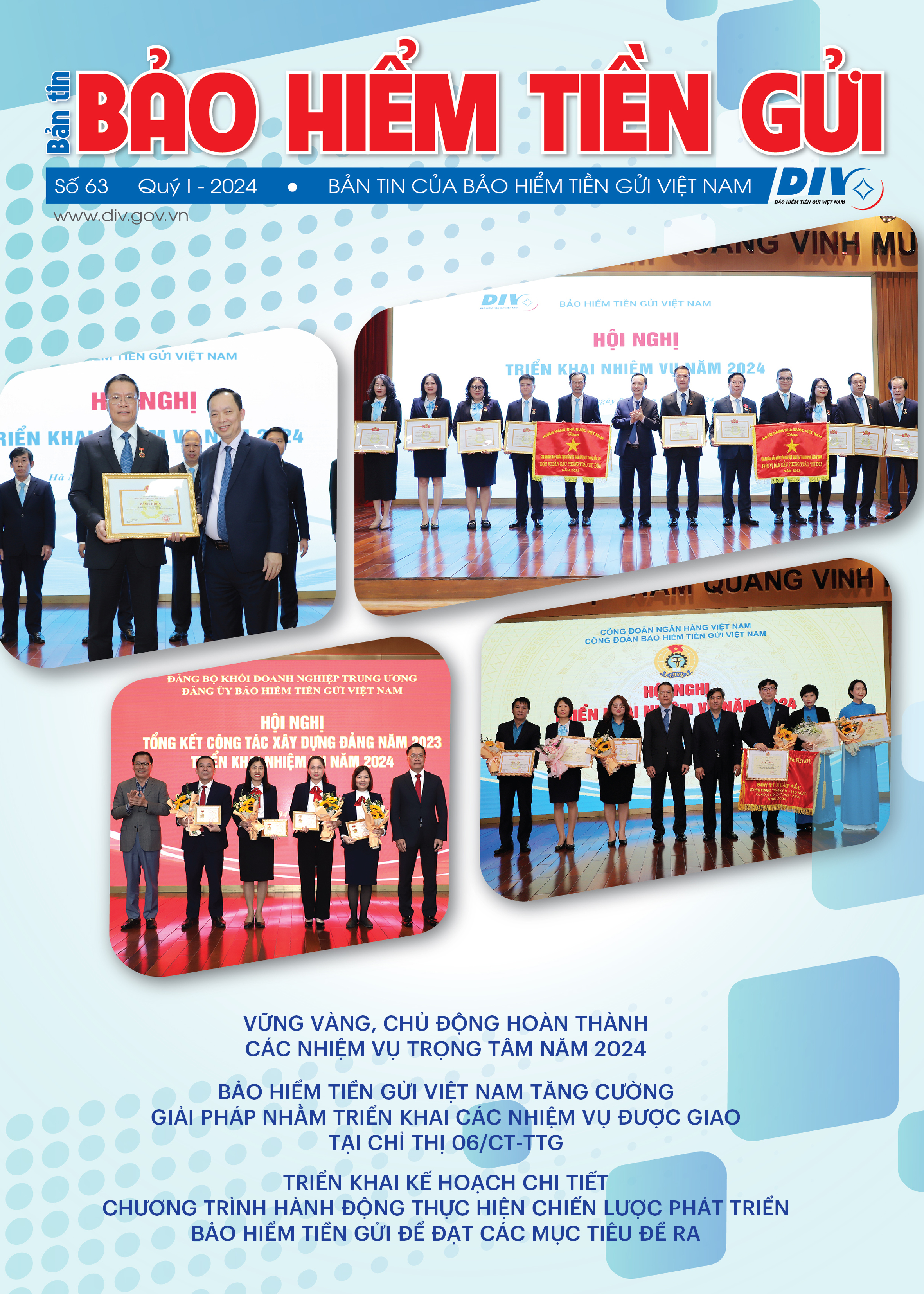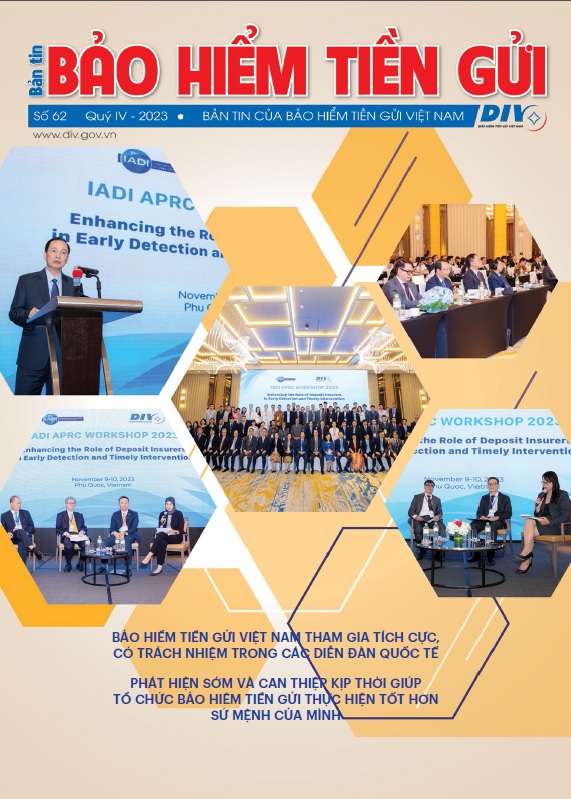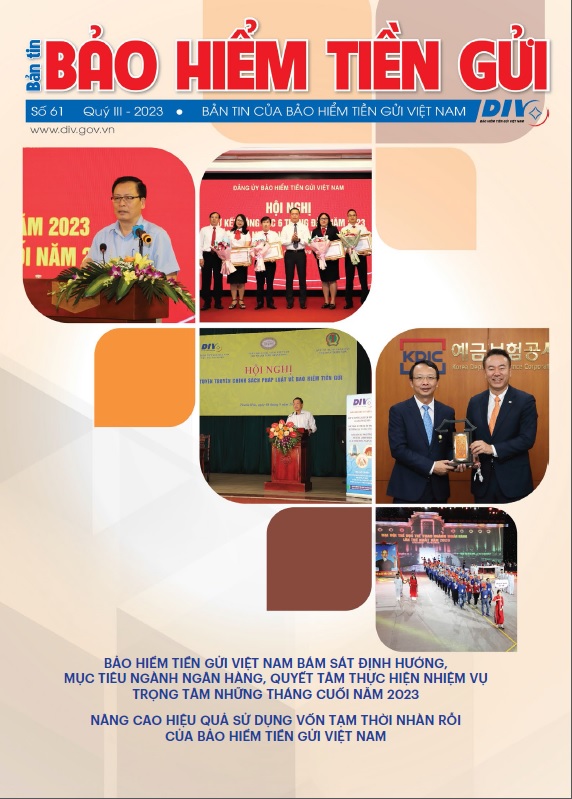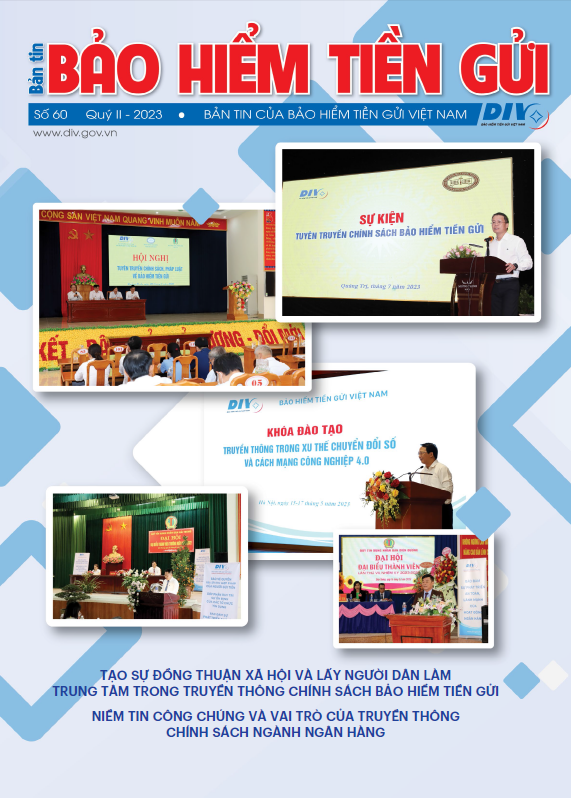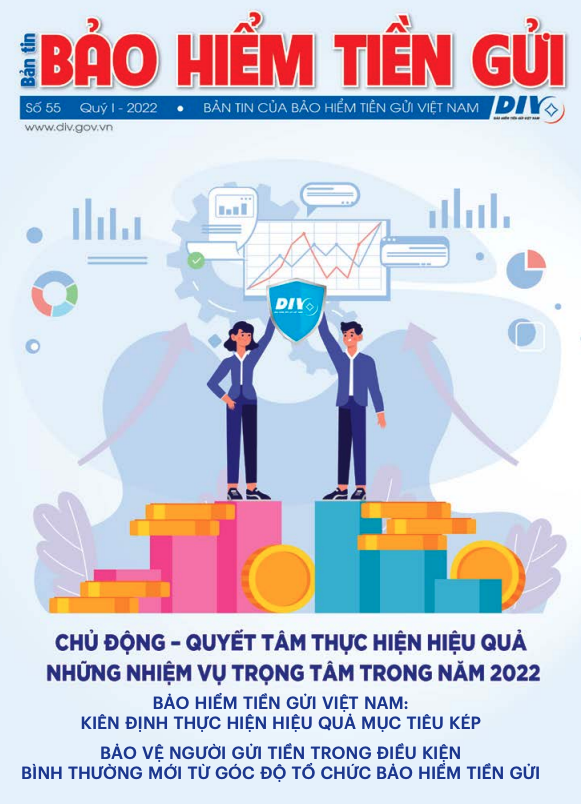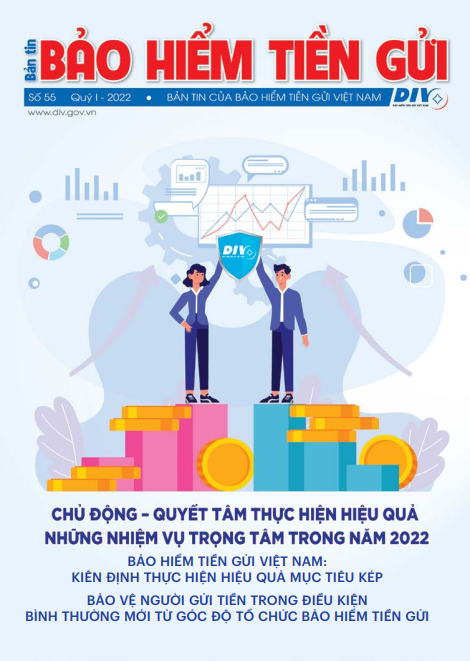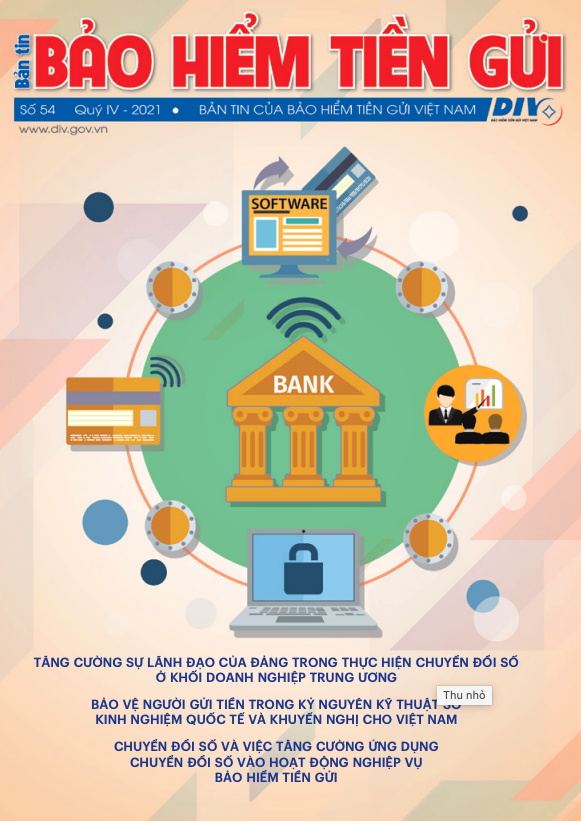National Financial Inclusion Strategy – Review after 4 years of implementation
Basically, all the tasks set out in the Strategy have been implemented according to the roadmap. The outstanding results can be summarized below.
Firstly, the legal framework has been continuously improved, creating a favorable environment for the implementation of financial inclusion goals.
Ministries and sectors have developed and submitted to competent authorities for promulgation 6 laws, 10 decrees, 10 decisions and directly issued many circulars, creating an increasingly synchronous legal basis for the implementation of the Strategy. These include submitting to the National Assembly for promulgation the Law on Credit Institutions (amended), the Law on Cooperatives (amended), the Law on Identification, the Law on Electronic Transactions, the Law on Insurance Business, and the Law on Anti-Money Laundering. They submit to the Government and the Prime Minister to issue Decrees and Decisions on the organization and operation of the Local Development Investment Fund, the establishment, organization and operation of the Cooperative Development Support Fund, credit for newly escaped-poverty households, pilot implementation of using telecommunications accounts to pay for small-value goods and services, approve the Project on developing non-cash payments in Vietnam for the period of 2021-2025, protect personal data, detail a number of articles of the Law on Anti-Money Laundering, micro-insurance. Circulars are issued such as the Circular guiding the implementation of a number of articles of the Law on Anti-Money Laundering, the Circular amending the regulations on lending by credit institutions to customers, including adding regulations on lending by electronic means, contributing to creating conditions for customers to access loans with faster and more convenient procedures, the Circular on restructuring debt repayment terms, maintaining debt groups to support customers in difficulty, etc.
In the trend of the 4.0 Industrial Revolution, ministries and branches have promptly revised, supplemented and issued new regulations related to the provision of financial products and services, especially digital financial services such as allowing the opening of payment accounts electronically through customer authentication using eKYC, without the need for face-to-face meetings; regulations on e-commerce; regulations on ensuring security and safety in payment activities; regulations on banking inspection and supervision, thereby creating a legal basis for the implementation of breakthrough solutions to promote access to and use of financial products and services for target subjects of comprehensive finance.
The SBV is also urgently coordinating with relevant ministries and branches to complete and submit to the Government for promulgation the following Decrees: (i) Decree replacing Decree No.101/2012/ND-CP dated November 22, 2012 on e-commerce, which is expected to supplement policies related to payment agent activities (one of the activities of a banking agent); regulations on the concept of electronic money, forms of expression of electronic money; (ii) Decree on the Controlled testing mechanism for financial technology activities in the banking sector. The promulgation of these two Decrees will contribute to creating a favorable environment and legal corridor for the expansion and development of payment services, promoting innovation in the banking sector, and promoting e-commerce in the economy.
Second, service providers continue to develop their operating networks, present in all provinces and cities across the country; distribution channels for banking products and services are developed quite diversely, increasingly meeting the needs of people and businesses, especially people living in rural, remote and isolated areas.
Based on the mechanisms and policies of the SBV, credit institutions have implemented solutions to develop transaction networks; rearrange the operating network in areas with high network density and ineffective operations towards areas with thin transaction networks or no branches or transaction offices on the principle of ensuring safety and efficiency in operations. At the same time, arrange the ATM network nationwide more reasonably, targeting rural, remote and isolated areas. Specialized financial institutions with operational orientations consistent with the goals of comprehensive finance include the Bank for Agriculture and Rural Development, the Bank for Social Policies, the Cooperative Bank, and the People's Credit Fund system, focusing on improving financial capacity, governance, service provision capacity, and developing a variety of financial products and services. The system of microfinance organizations, programs, and projects has been facilitated in its operations, continued to grow steadily, and maintained a high debt recovery rate. Therefore, these organizations have played a good role in supporting capital and providing appropriate financial products and services for the target groups of comprehensive finance.
Distribution channels, digital banking products and services on mobile devices, along with solutions to ensure information security and safety, are focused on by service providers, thereby improving access to financial services, increasing customer experience and satisfaction. In particular, during the Covid-19 pandemic, credit institutions have promoted online distribution channels and e-commerce solutions to both support production and business while ensuring epidemic prevention as required by the Prime Minister. By the end of 2023, there were 51 non-bank organizations providing payment intermediary services in operation, including 49 organizations providing e-wallet services, 49 organizations providing electronic payment gateway services and supporting collection and payment, 14 organizations providing electronic money transfer support services, 1 organization providing financial switching and electronic clearing services. At the same time, modern distribution channels based on digital technology applications continue to grow strongly in both the number and value of transactions. By the end of 2023, compared to 2022, the value of payments via the Internet increased by nearly 6.5%; payments via mobile phones increased by nearly 12.73%; payments via QR codes increased by 157.2%; and domestic payments via bank cards increased by 17.72%. In 2023, the number of e-commerce transactions reached 11,342.8 million with a value of VND 222.3 trillion (up 49.36% in number and 1.28% in value); the ratio of e-commerce value/GDP is nearly 22 times.
Third, financial products and services, especially basic financial products and services, targeting the target audience of comprehensive finance are focused on development. In addition to traditional products and services, on the basis of modern distribution channels based on digital technology, service providers continue to develop a variety of new products, services and utilities. Many products and services have been researched and deployed such as online account opening services by electronic means (e-KYC), payment accounts without account maintenance fees and minimum account balance, linked to ATM cards; online savings deposit services, interest rates, diverse and flexible deposit methods; money transfer services, payment of bills for basic household services such as electricity, water, phone cards, cable TV, other types of services such as insurance, online shopping, online payment of taxes, fees, charges, social insurance on the National Public Service Portal; Consumer lending products with reasonable interest rates; investment, borrowing, trade finance on digital channels; automated customer care services with artificial intelligence technology... From the time of implementation (end of March 2021) to the end of December 2023, 40 banks have opened payment accounts for customers using e-KYC with nearly 35 million active payment accounts. By December 2023, 27 organizations have deployed card issuance using e-KYC with about 14.9 million cards in circulation issued using e-KYC. The total number of transactions (including deposit/withdrawal/money transfer/payment transactions) via customers' Mobile-Money accounts from the pilot implementation (November 2021) to the end of December 2023 is more than 70.3 million transactions with a total transaction value of nearly VND 3,093 billion.
Credit institutions continue to balance and focus capital resources on specific credit programs serving agricultural and rural development; diversify credit products to suit the production, business and consumption needs of people and businesses. At the same time, credit institutions also actively remove difficulties for customers affected by climate change, drought, saltwater intrusion, African swine fever, especially the Covid-19 epidemic such as restructuring debt repayment terms, exempting and reducing interest, maintaining debt groups, providing new loans with appropriate interest rates, creating conditions for customers to restore and develop production and business. By December 31, 2023, outstanding credit for small and medium enterprises reached VND 2,482,971 billion (up 13.61% compared to the end of 2022), accounting for 18.31% of outstanding credit of the economy; Outstanding credit for cooperatives and cooperative unions reached VND 6,146 billion (down 2.7% compared to the end of 2022). Outstanding loans for living needs increased by 7.83% compared to the end of 2022 and accounted for 21.16% (in the same period in 2022, it increased by 27.93% and accounted for 22.33%).
Fourth, financial infrastructure has been invested in upgrading and perfecting to increase efficiency, meeting the growing needs of the economy
Important payment systems such as the Interbank Electronic Payment System have shifted from a decentralized processing model with 5 regional processing centers to a single national processing center, adding more services, upgrading member software to meet the requirements of processing large volumes of data; The Automated Clearing House system serving retail payment transactions has been officially put into operation, thereby establishing a modern retail payment infrastructure, real-time payment, serving the needs of money transfer, retail payment transactions, and payment of utility services.
The Ministry of Public Security has officially operated the National Population Database system since July 1, 2021; submitted to the Prime Minister for promulgation of regulations on electronic identification and authentication on the basis of the national population database and citizen identification database, creating conditions for relevant ministries and branches to connect and share to use electronic identities, electronic identification accounts, and serve to verify customer information. To date, the Ministry of Public Security has deployed a national population database system officially connected with 63 localities, 17 ministries and branches and 4 state-owned enterprises (Vietnam Electricity Group, VNPT, Mobifone, Viettel). As a result, more than 1.014 million requests for information lookup and authentication have been received, with a revenue of more than 500 billion VND for the State. As of December 2023, 53 credit institutions are coordinating with enterprises licensed by the Ministry of Public Security to provide user authentication solutions using chip-embedded citizen identification cards to research and deploy customer authentication solutions at transaction counters (of which 9 credit institutions have actually deployed); 48 credit institutions have contacted C06 to discuss data cleaning plans; 13 credit institutions have been contacting C06 to apply identification accounts and customer authentication (of which 10 credit institutions have actually deployed at transaction counters, 11 credit institutions have actually deployed via phone applications); 8 credit institutions have been contacting C06 to apply identification accounts and electronic authentication (VNeID); 26 credit institutions have contacted C06 to deploy or self-organize internal training, disseminate knowledge on identifying real/fake citizen identification cards; 19 credit institutions are working with C06 to explore credit scoring solutions.
The credit information infrastructure has achieved remarkable progress with information coverage increasingly expanded, improving both in quantity and quality of information. The credit information coverage of the adult population continues to record positive growth, reaching over 72% by the end of 2023 (over 70% by the end of 2022).
Fifth, financial education, capacity building and financial knowledge are implemented in many diverse, creative forms; mechanisms and policies on financial consumer protection continue to be improved.
The Ministry of Finance, the Ministry of Information and Communications, and the SBV have implemented training programs to enhance financial knowledge and skills for people and businesses. The Ministry of Education and Training has integrated financial knowledge into the National General Education Program. Ministries and sectors have also proactively developed and implemented human resource training programs to promote financial inclusion. Financial service providers regularly organize training programs and courses to develop a team of banking management and business staff with high professional qualifications, awareness of law compliance, ethics and professional responsibility, thereby improving the quality of customer service.
Regulations related to the provision of financial products and services by ministries and branches have been and are being completed towards transparency of information on financial products and services. Dispute resolution mechanisms and customer complaints have also been supplemented and completed towards strengthening the protection of financial consumers.
Sixth, financial inclusion goals are integrated into programs and action plans of ministries, industries and localities, creating a spread in both scope and scale of implementation of the Strategy.
The Ministry of Agriculture and Rural Development has integrated financial inclusion goals into 3 National Target Programs for the period of 2021-2025, including: New Rural Development, Poverty Reduction and Sustainable Social Security, Socio-economic Development in Ethnic Minority and Mountainous Areas. Provincial and municipal People's Committees have proactively integrated financial inclusion goals into the 5-year and annual socio-economic development plans; and the annual implementation plan for new rural development of localities.
The Ministry of Information and Communications has coordinated with relevant agencies to direct and orient information for press agencies, radio and television stations to actively promote contents related to the Strategy; Open special pages and columns to communicate and orient public opinion, help people and the community understand the Strategy correctly, raise public awareness about the implementation of comprehensive financial goals. In some localities, news articles and reports are also carried out in ethnic languages. Localities have also actively directed the promotion of propaganda to organizations and people in the area in many rich and diverse forms through news bulletins, columns, and topics on radio and television; special pages on printed newspapers and electronic information sites; publish propaganda materials; organize competitions, training courses, integrate into the activities of socio-political organizations at all levels, group activities, residential blocks, etc. With the active and synchronous implementation of the tasks and solutions of the Strategy, the close coordination of ministries, branches, and localities has helped improve the ability of people and businesses to access financial services. By the end of 2023, the average number of branches and transaction offices of credit institutions per 100,000 adults will reach 17.57 branches and transaction offices (an increase of 10.80% compared to 2022); the proportion of communes/towns with financial service points over the total number of communes/towns nationwide (excluding service points of the Vietnam Bank for Social Policies) will reach 32.98% (32.60% in 2022); the average number of ATMs per 100,000 adults will reach 27.30 (a decrease of 2.3% compared to 2022); the average number of POS machines per 100,000 adults will reach 699.97 (an increase of 28.32% compared to 2022); the proportion of adults with payment accounts at banks will reach 77.41%; The proportion of adults with credit history information in the credit information system reached over 72%; The ratio of insurance premium revenue to GDP reached 2.22%.
Some limitations
In addition to the achieved results, the implementation of the Strategy still has some shortcomings and limitations.
Firstly, the current legal framework is still inadequate, not keeping up with the demands of reality, especially in the context of strong development of science and technology, the emergence of new distribution channels, products and financial services based on innovation and application of digital technology but also has potential risks and the participation of Fintech companies in the banking and finance sector, especially in terms of inspection and supervision of state management agencies.
Secondly, the network of organizations providing and distributing financial services such as the network of branches, transaction offices, POS/ATM systems of credit institutions is mainly distributed in urban areas, developed economic zones, densely populated areas, while still limited in rural areas, remote areas.
Thirdly, financial products and services need to continue to be diversified and designed more appropriately to meet the needs of some customer segments that are the target audience of comprehensive finance. Although e-commerce has achieved significant results, a part of the population, especially the elderly, people in rural, remote and isolated areas, has not yet widely used this form of payment; criminal acts and "black credit" are still complicated with many forms and tricks that cause harm to financial consumers; agricultural production still lacks preventive measures and tools to limit risks, agricultural insurance policies are slow to be implemented; mechanisms to support access to capital for small and medium-sized enterprises through guarantees from the Credit Guarantee Fund and capital support from the Small and Medium Enterprise Development Fund have not met expectations.
Fourthly, the connection, integration, and data sharing between payment systems with systems and services in sectors and fields in the economy are still stuck, affecting the promotion of e-commerce for services in the economy, especially public services. It is necessary to continue to accelerate the exploitation of the national database on citizens in identifying and authenticating customers to help credit institutions promote the development of digital financial products and services. In addition, the database on financial inclusion is still incomplete, creating many difficulties in assessing the effectiveness of the tasks and solutions of the Strategy.
Fifthly, the communication work on financial inclusion has only achieved initial results, it is necessary to continue to promote implementation with more diverse and rich forms to improve people's financial knowledge and skills, especially people in rural, remote and isolated areas; It is necessary to continue to accelerate the integration of financial education content into national general education programs as well as strengthen financial education for students.
Some recommendations for the coming time
Looking at more than 4 years of implementing the National Financial Inclusion Strategy, the financial access of target groups has improved significantly, but there are still many difficulties and challenges ahead. The severe consequences of the Covid-19 pandemic still affect all aspects of socio-economic life, business production activities of enterprises and people's lives, so it also has a significant impact on the implementation results of the Strategy's goals. Therefore, in the coming time, ministries, branches, localities and relevant agencies need to continue to coordinate closely, synchronously and effectively implement the tasks and solutions of the Strategy. Specifically:
Continue to complete the legal framework to facilitate and promote the development of the banking and financial services market, develop new products and services along with improving management and supervision capacity, ensuring system safety (such as research, developing and promulgating documents guiding the Law on Credit Institutions (amended) on the activities of microfinance institutions, people's credit funds, payment agent activities, controlled testing mechanism of banking activities, etc.; Law on Insurance Business (amended) on microinsurance, agricultural insurance; ...); promote e-commerce in the economy, especially encouraging the development of e-commerce in rural areas, remote areas, border areas and islands.
Continue to complete and strengthen payment infrastructure connectivity to serve electronic payment transactions in the economy; Accelerate the exploitation of connections and sharing of national population databases and national citizen identification databases to verify customer information, helping credit institutions to enhance the development of digital financial products and services. Credit institutions, payment intermediaries, and insurance companies: (i) continue to arrange and expand the coverage of their operating networks as well as the capacity to provide services in rural areas, remote areas, and economically disadvantaged areas; (ii) actively implement strategic directions on the development of supply channels, financial products and services, especially the application of digital technology solutions to diversify products and services, improve service quality and customer convenience; (iii) have specific financial policies, solutions, products and services suitable for customers who are the target of comprehensive finance; create conditions and support these subjects to access financial resources and services to develop production and business, improve life, enhance social welfare, towards stable and sustainable development.
Strengthen financial education, improve financial capacity and knowledge for people with many rich, diverse and creative forms; accelerate the integration of financial education into the national general education program; continue to research and integrate comprehensive financial goals into new rural development programs; strengthen financial consumer protection; promote international cooperation, take advantage of support from countries and international organizations in promoting comprehensive finance in Vietnam.
Strengthen communication, education, raise social awareness of comprehensive finance and the implementation of comprehensive financial goals. The issuance and implementation of the National Financial Inclusion Strategy demonstrates the determination of the Government in building a fair and prosperous Vietnam. The initial results have made important contributions to improving people and businesses' access to financial products and services, however, there are still certain limitations. Regularly evaluating the results achieved, identifying existing problems and limitations to find appropriate and effective solutions for the next stages of the Strategy is extremely necessary, contributing to creating all favorable conditions for people and businesses to access financial products and services, enjoy the fruits of growth, and leave no one behind in the country's development process./.
Communication Department
